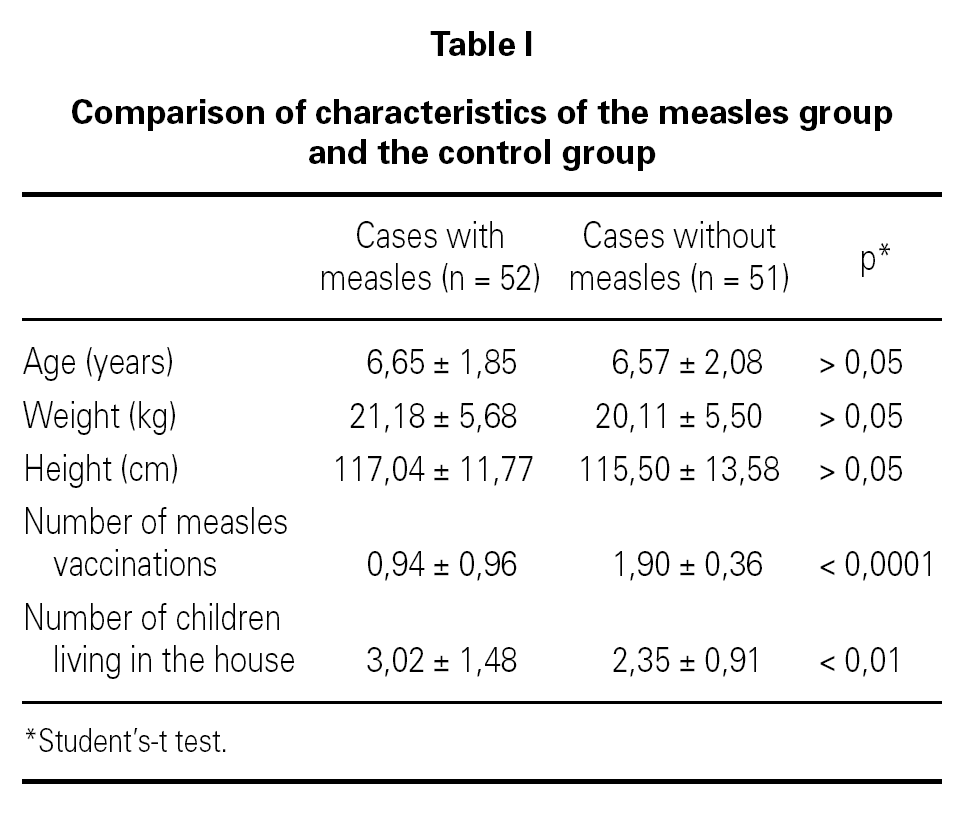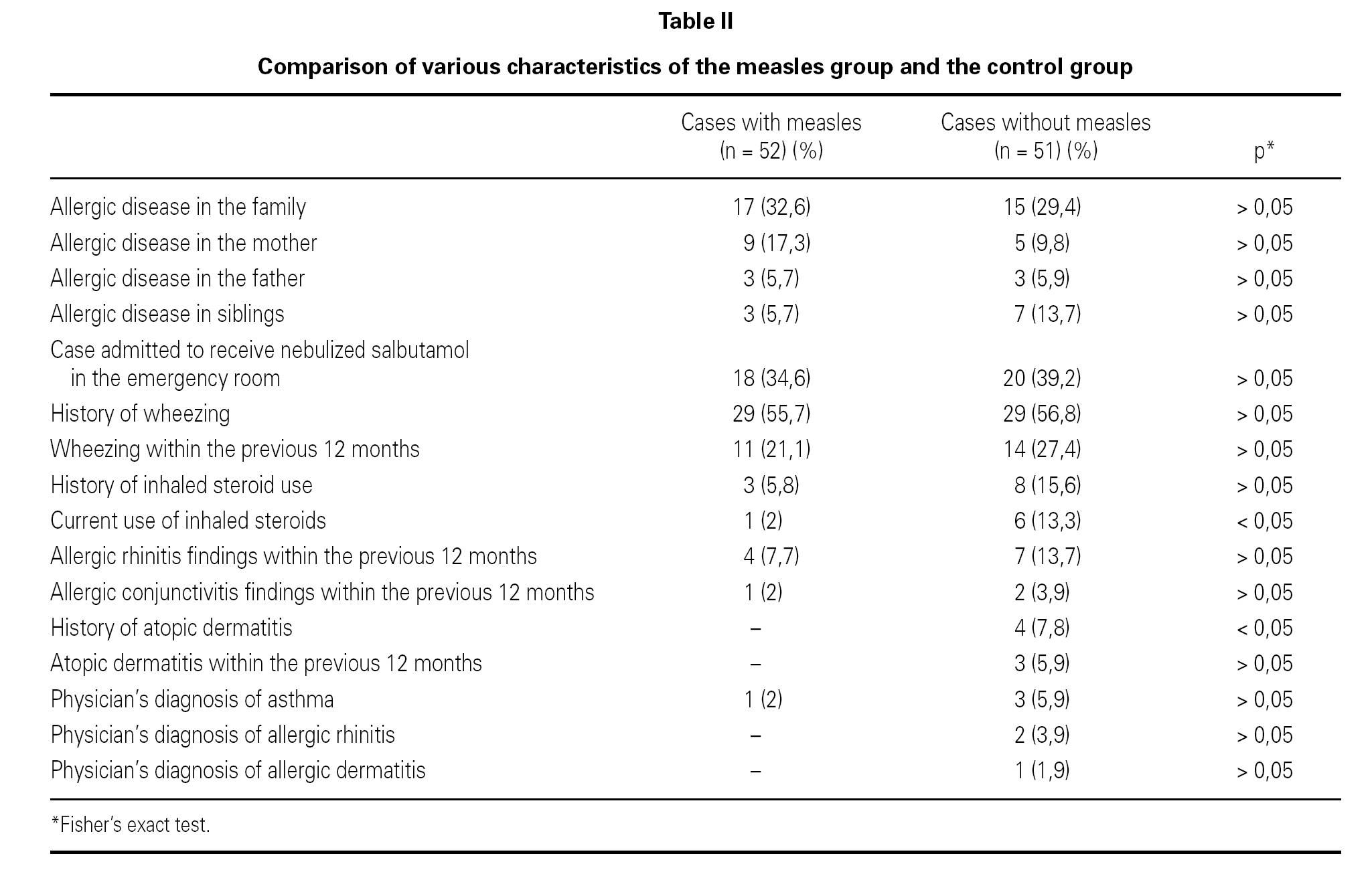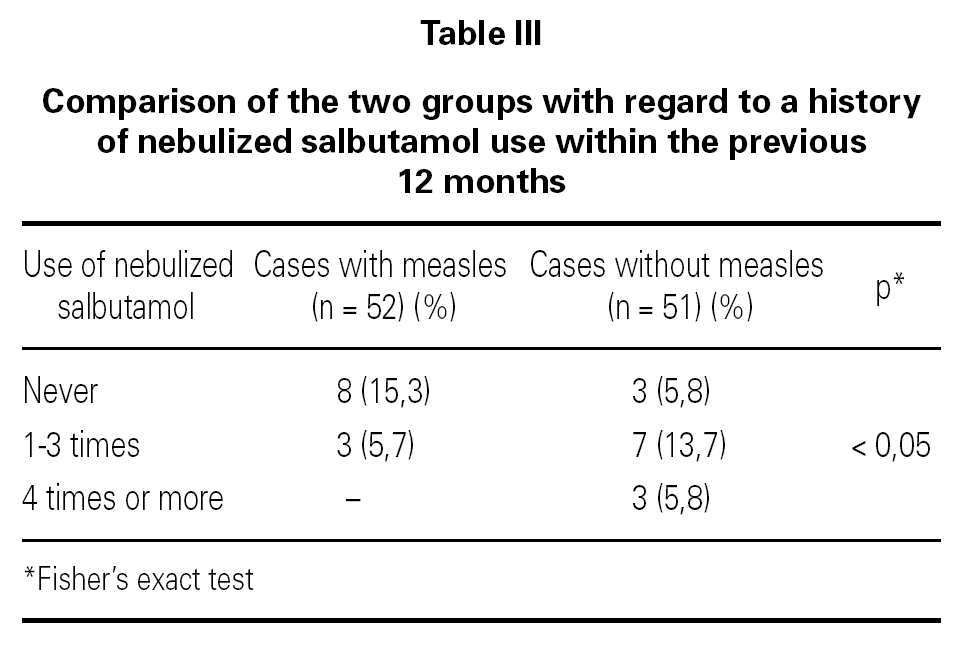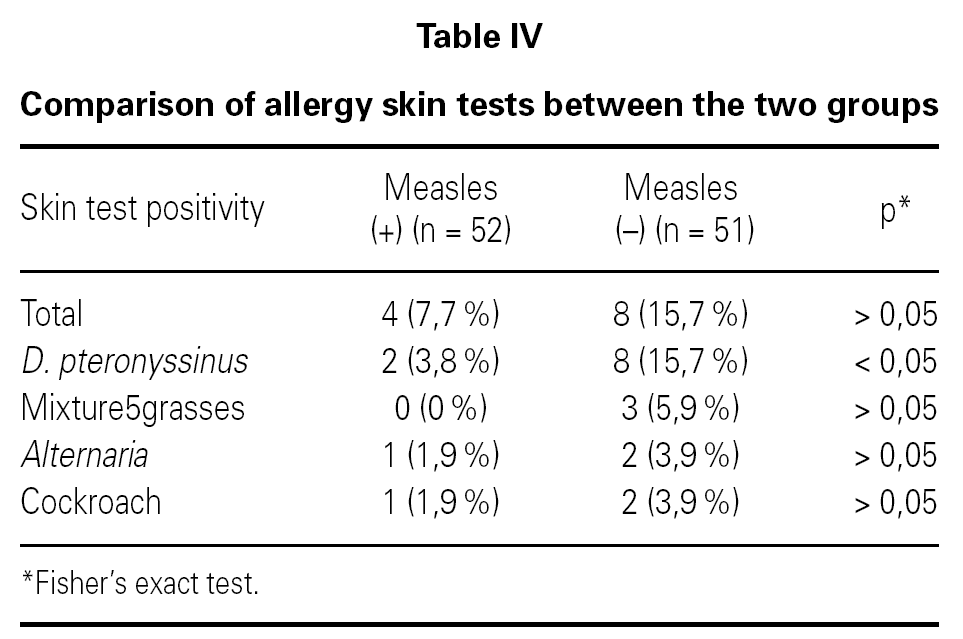INTRODUCTION
The prevalence of allergic diseases is steadily increasing in our country similar to the increase throughout the world 1-4. Allergic diseases are known to be more frequent in Western countries 5-7. Similarly, the prevalence of atopy diagnosed by the skin prick test and specific IgE is also on the increase 8,9. These findings may be attributed to the hygiene hypothesis, which suggests an increase in the frequency of atopic diseases due to the decreasing number of children in families and a fall in the number of infections 10,11. According to this hypothesis, the cytokine profile with an innate predominance of allergenic Th2 profile, shifts to the non-allergenic Th1 profile with the influence of childhood infections 12,13. Although a number of studies demonstrate that measles and other viral infections prevent allergic conditions, other reports suggesting an increase in allergic diseases due to these infections are also present 15-20. Turkey is a country with a high prevalence of childhood diseases. The number of measles cases was 30,509 in 2001 and the morbidity rate was 44.97 per one hundred thousand 21.
We aimed to investigate the correlation of allergic diseases with a history of measles.
METHODS
Fifty-two children with a diagnosis of measles who were hospitalized in the Pediatric Infectious Diseases Clinic in the Okmeydan Teaching hospital during 1996 and 2002 were incorporated into the study. The control group consisted of fifty-one children who had been admitted to the outpatient clinic for other reasons and did not have a history of measles or a chronic disease. The diagnosis of measles was based on the presence of a maculopapular rash, high fever, rhinitis, conjunctivitis, cough, and Koplik spots on the buccal mucosa. Control cases without a history of measles were selected randomly among cases admitted to the pediatric outpatient clinic for other reasons. The number of measles vaccinations was recorded according to the children's vaccination cards.
The "International Study of Asthma and Allergies in Childhood" (ISAAC) questionnaire was applied to both groups. Sociodemographic questions were also asked. The parents of children enrolled in the study gave verbal consent. Prick skin tests with four allergens-Dermatophagoides pteronyssinus, Mixture5 Grasses, Alternaria and cockroach antigens (Stallergenes, France) were performed. Sterile saline and histamine (10 mg/dl) were used as negative and positive controls respectively in the prick test simultaneously with the above-mentioned allergens. Tests results were evaluated 15 minutes after the procedure. The endurance diameter for each allergen was subtracted from that of the negative control and a resulting endurance of >3 mm was interpreted as positive. Moreover, when the endurance diameter of the allergen was subtracted from that of the negative control and the resulting number was divided by the endurance diameter of histamine, a value of at least 0.5 was also considered positive.
Statistical analyses were run with SPSS for windows. Fisher's exact test and independent t test were used for inter-group comparisons. A p value of < 0.05 was considered statistically significant.
RESULTS
The comparisons of age, height and weight in both groups did not yield a significant difference (table I). While the mean number of measles vaccinations was 0.94 in the measles group, it was 1.90 in the group without measles. The number of children living in the house was significantly higher in the measles group, compared to that of the control group.
The number of children using inhalation corticosteroids was significantly higher in the group without measles than in the measles group (p < 0.05) (table II). There were significantly more children with a history of allergic dermatitis in the control group, compared to the group with measles (p < 0.05).
The primary attack of wheezing was significantly earlier in the measles group (table III).
History of experiencing a wheezing attack and use of nebulized salbutamol in the previous 12 months was significantly less frequent in the measles group (table III).
While the positivity of D. pteronyssinus allergy skin test was significantly higher in the group without measles, there was no significant difference between the two groups with regard to the results of other allergy skin tests (table IV).
DISCUSSION
Up to date, conflicting results on the correlation between allergic diseases and childhood infections have been obtained. While some reports suggest that childhood infections prevent the development of allergic diseases, others claim that they increase the frequency of these conditions 14-20. However, general opinion is that viral infections in childhood prevent the occurrence of asthma. A multi-center cohort study in Germany indicates that recurrent viral upper respiratory tract infections early in life decrease the likelihood of asthma, whereas a positive correlation is present between recurrent lower respiratory tract infections and wheezing attacks 22. Authors attribute this to the predilection of the immature immune system towards Th1 phenotype with the stimulation of recurrent viral infections in early childhood, which consequently decreases the likelihood of asthma during the pre-school period 22. Similarly, in vitro studies suggest that bacterial and viral infections prevent atopy by increasing the production of g -interferon by Th1 type T lymphocytes 23,24. This cytokine prevents the development of atopy, ensuring the transformation of Tho to Th1 instead of Th2.
In a study in Guinea Bissau, 395 children aged six years or younger were followed up for 14-16 years. Allergic diseases were 50 % less frequent in children who had contracted measles than in those who had not 14. The hypothesis that measles prevented allergic diseases was investigated in Finland by evaluating medical records between 1982 and 1986 20. Of the 547 910 children aged between 14 months and 19 years, 20 960 had experienced measles and the remaining had not. The results of the study showed that allergic diseases were more frequent in cases with measles. The results of this study were not consistent with the hypothesis that measles could prevent allergic diseases. The higher frequency of allergic diseases in cases with a history of measles was attributed to genetic predisposition. Another report from Denmark revealed that children vaccinated for measles, rubella and varicella were not protected from atopy even when they were exposed to these infections during childhood 25.
The present study investigated the correlation between measles and atopy by comparing two groups of children with and without measles. Sensitivity to D. pteronyssinus the most common cause of allergy was more frequent in the control group without measles. While the D. pteronyssinus allergy skin test was positive in only two patients (3.8 %) in the measles group, 8 patients (15.7 %) were positive in the control group. The mean number of measles vaccinations was less than one in the measles group and almost two in the control group. A significant difference was present between the two groups in terms of age at which the wheezing episode first occurred. The age at which measles was contracted was three in the measles group. The age at which the first wheezing episode occurred in this group was less than two in 48 % of the cases; this percentage dropped to 4 % between the ages 2 and 4. No primary wheezing episode in this group was detected after the age of four. This decrease corresponds to the post-measles period. On the other hand, the decrease due to aging was slower in the control group. The history of experiencing a wheezing episode and receiving salbutamol in the emergency room during the previous 12 months was higher in the control group. Three children in the measles group and 10 children in the control group had received salbutamol in the emergency room; this difference was statistically significant (p < 0.05).
In conclusion, children with a history of measles in our study group had less frequent symptoms of allergic diseases. In children without a history of measles, sensitivity develops, particularly to the house dust mite.
Correspondence:
Ercan Kucukosmanoglu
Gaziantep Universitesi Tip Fakultesi
Pediatri Anabilimdal
Cocuk Allerjisi Uzman
Universite Bulvari 27310
Gaziantep. Turkey
E-mail: ercankosmanoglu@yahoo.com












